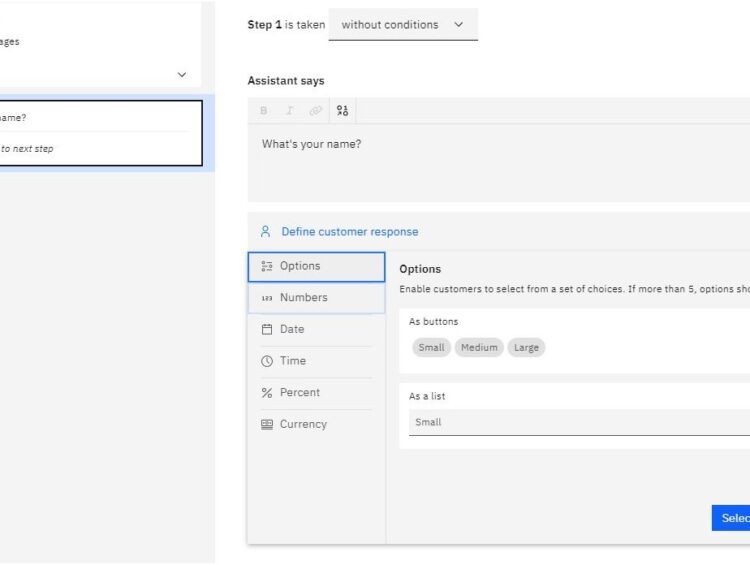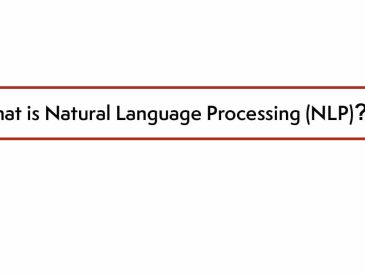There are three main types of AI chatbots, which can be created using IBM’s new AI-powered virtual agent, the IBM Watson assistant. These types of bots can solve business problems for large companies, aggregate data, and serve the public good. Woodside engineers, for example, spent many hours trying to identify engineering problems and safety hazards. Those engineers spent four times as much time reviewing documents. Thankfully, they now have help.
AI-powered virtual agent
Watson Assistant is an AI-powered virtual agent that can resolve customer inquiries and handle complex customer problems. Watson Assistant is designed to minimize customer frustration by identifying ambiguous statements and providing context. It also seamlessly passes more complex customer issues onto human agents. Watson Assistant uses a single conversational platform and works across voice, messaging, and digital channels. It recognizes customer-specific terms and domains and adapts to its interaction environment.
The first step is to embed the Watson Virtual Agent in your website or mobile application. It can be deployed quickly and seamlessly. Then, customers can interact with Watson anytime they have a question or need. The AI-powered virtual agent can answer customer queries and direct them to the appropriate agent based on their preferences. Once installed, the agent will begin working immediately for your business. The Watson Engagement Metrics Dashboard provides rich analytics so you can evaluate customer interactions and trends. It can also integrate with existing systems and content, so you can customize the experience for customers.
IBM has also added new features to Watson Assistant. Among these improvements is integration with existing contact center phone systems. Watson Assistant can also be configured to hand off to a live agent to handle customer queries. As long as the assistant has enough knowledge to answer common queries, the system can be used by businesses. Its latest version can detect customer queries and provide a detailed answer without the need for human interaction. The virtual agent is designed to be easy to create and maintain.
Watson Assistant is available for private and public clouds. It is compatible with IBM Cloud Pak for Data. It supports several AI services. One of the main benefits of Watson Assistant is its ability to scale globally. Furthermore, Watson Assistant can work with multiple tools and systems, which can help you drive efficiencies and generate new value for your clients. The AI-powered virtual agent can also help you focus on your business. Its capabilities and flexibility are unmatched in the market.
Conversational AI platform
Conversational AI technology has many uses for companies. In the workplace, conversational AI can streamline administrative tasks, onboarding processes, and employee information. It also simplifies the human resources process. Most households have at least one IoT device. Google Home, Apple Siri, and Alexa speakers are common examples. IBM Watson assistant is one such technology. Using conversational AI technology in the office can simplify tasks such as payroll, accounting, and employee onboarding.
Companies should integrate their conversational AI platform with multiple customer touchpoints. It must integrate with existing business systems, allowing conversation to continue in the customer’s preferred channel. Conversational AI systems must identify unique customer needs, categorize them, and respond appropriately. In addition, they should be able to respond in real-time to each customer, reducing wait times and enhancing customer loyalty. The ability of conversational AI to cross-sell and upsell products can make business processes simpler for customers and more profitable for companies.
Another major advantage of the IBM Watson Assistant is its ability to learn. It gains knowledge through every conversation. As a result, it surfaces relevant responses and improves over time without the supervision of humans. This approach helps companies reduce friction in customer interactions, as it recognizes user intent and the flow of natural language. In addition to its benefits for businesses, IBM Watson Assistant can be used by customers across all channels. This is because omnichannel interaction is essential in today’s marketplace.
With IBM Watson Assistant, customers can interact with an AI-powered virtual agent anywhere, anytime, and on any device. Conversational AI technology provides accurate, fast answers and can be deployed anywhere. The IBM Watson Assistant also uses natural language processing to learn from the way customers communicate. Using conversational AI to resolve problems eliminates the frustration of waiting on hold, searching for answers, and interacting with chatbots who are not helpful.
Machine learning engine
IBM has added image and speech recognition to its Watson assistant. It has also acquired AlchemyAPI, a company that specializes in deep learning-based text and image analysis. Its technology can process over three billion API calls each month. The IBM Watson assistant can understand questions and provide answers based on context. It is currently available only in English. It is built to help you and your business make better decisions. But it is not as effective as a human assistant.
Watson Assistant has many benefits. It is built on powerful machine learning algorithms and a graphical user interface. It competes with Amazon Lex and Dialogflow, as well as Microsoft’s Bot Framework. It is a comprehensive chatbot framework, designed for enterprise use. While it’s not free, it’s free for small projects. It also includes a cloud-based social workspace for data professionals, so you can easily collaborate with colleagues on various open-source tools.
The IBM Watson assistant can solve problems in various fields, including business. For example, it can solve business problems for large corporations and aggregate data for public good. Woodside, for example, had engineers spend a great deal of time identifying engineering problems and safety hazards. They had to read and analyze massive volumes of documentation in order to find the answers they needed. The time taken to study the data was four times as long as it would have taken a human.
The IBM Research team uses state-of-the-art techniques for AI. Initially, they focused on hyperband/Bayesian optimization and ENAS/DARTS for Neural Architecture Search. However, they later moved on to automate the pipeline configuration. The team uses the same method to train the system to recognize faces, speech, and text. All this helps the IBM Watson assistant understand your needs better.
As the IBM Watson assistant becomes more advanced, you will be able to develop more complex bots. The Watson assistant offers a free tier where you can access almost all bot-building tools. By using the free tier, you can test whether the framework suits your needs. And if you think it will, you can continue to build more bots and add more skills. This way, your business can benefit from Watson’s powerful AI capabilities.
Language model
The language model of IBM Watson assistant enables the creation of three different types of chatbots: social, business, and customer service. Using the universal language model, Watson can analyze unstructured images, emails, and social media to derive valuable insights. By analyzing this data, the Watson Assistant can be used to identify real-time trends and make smarter decisions. By combining IBM Watson’s linguistics, natural language processing, and machine learning capabilities, businesses can create chatbots that help them solve problems and make better decisions.
The language model of IBM Watson assistant can map conversations of different companies, industries, and customers. The AI can also learn common conversation paths and customize the assistant to match a brand’s voice and colors. Over time, the assistant can learn from and improve upon the different conversation paths it hears. It can be integrated into various applications, such as webchat, phone, Salesforce, Zendesk, Genesys, and other customer-facing tools.
The advanced pattern creation feature is available in beta in the Plus, Premium, and Enterprise plans of IBM Watson. It is intended to help the assistant analyze massive amounts of text and identify similar information from various sources. IBM Research developed a method for labeling data and training models that allows the AI assistant to learn underlying text patterns from as few as two examples. The language model of IBM Watson assistant is designed to be useful for many customers and make life easier.
The Language model of IBM Watson assistant enables users to input their language to communicate with the AI assistant. Although English is the default language for the user interface, IBM Watson assistant supports languages like Arabic, Chinese (Simplified), Dutch, French, German, Italian, and Japanese. The RPG language has features such as column-oriented syntax, program cycle, and other language characteristics. These features are essential for understanding and interacting with the AI assistant.
One of the most important features of the IBM speech to text feature is its ability to recognize multiple voices. It is optimized for two-way call center conversations and can identify up to six speakers in an audio file. The transcript output includes labels for each speaker. This makes speech to text a valuable addition to call center records and meeting transcripts. It can also protect sensitive user data using numeric data’s redaction. The feature is not the default setting for speech to text, so you must select it to “True” before finalizing the transcript.





